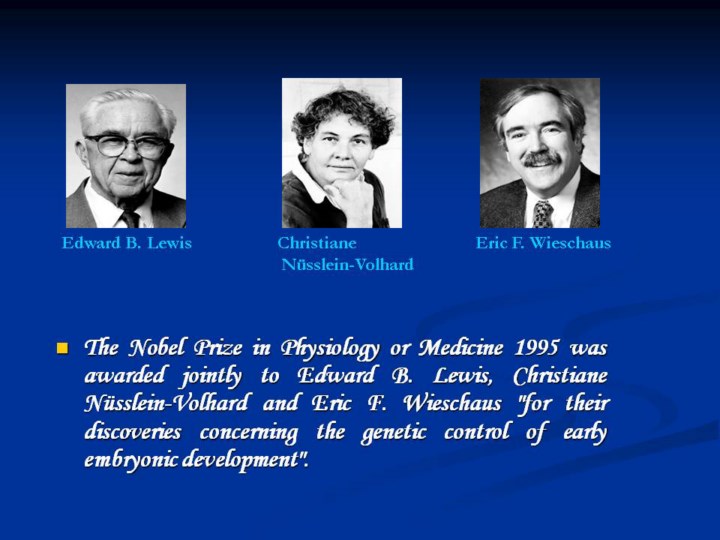 |
able to
identify, localize and classify a small group of genes responsible for the
control of early embryonic development of the fruit fly, Drosophila
melanogaster. This small group of genes was shown to be responsible in
determining the body plan and the formation of body segments in the
embryonic fruit fly.
Found 150 genes that were essential in the genetic control of embryonic
development. Out of that 150, they found 15 genes that, if mutated, would
cause defects in fruit fly segmentation. They even went further, classifying
these genes into groups based on their effects on segmentation. First, gap
genes control the body plan along the head-tail axis. Loss of gap gene
results in a reduced number of body segments. Second, pair rule genes affect
every second body segment. Loss of this gene known as "even-skipped" will
result in an embryo consisting only of odd numbered segments. Lastly,
segment polarity genes affect the head-to-tail polarity of individual
segments.
|
